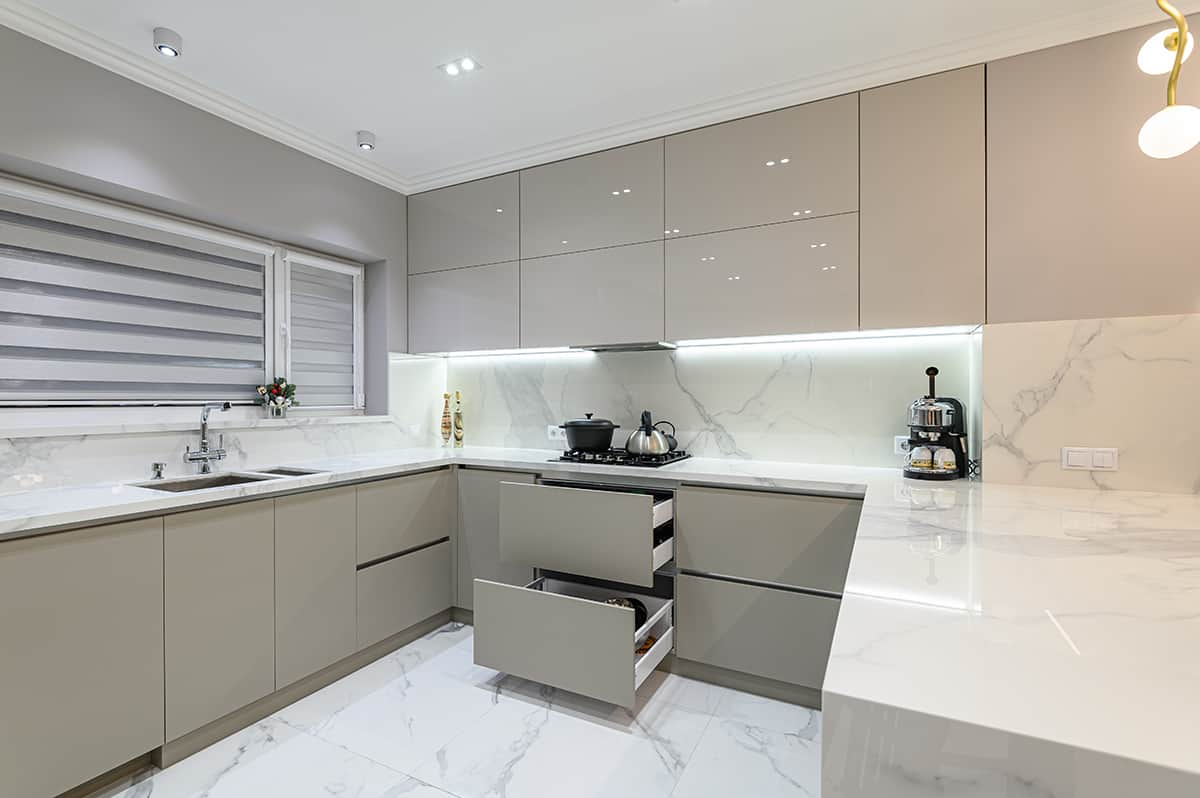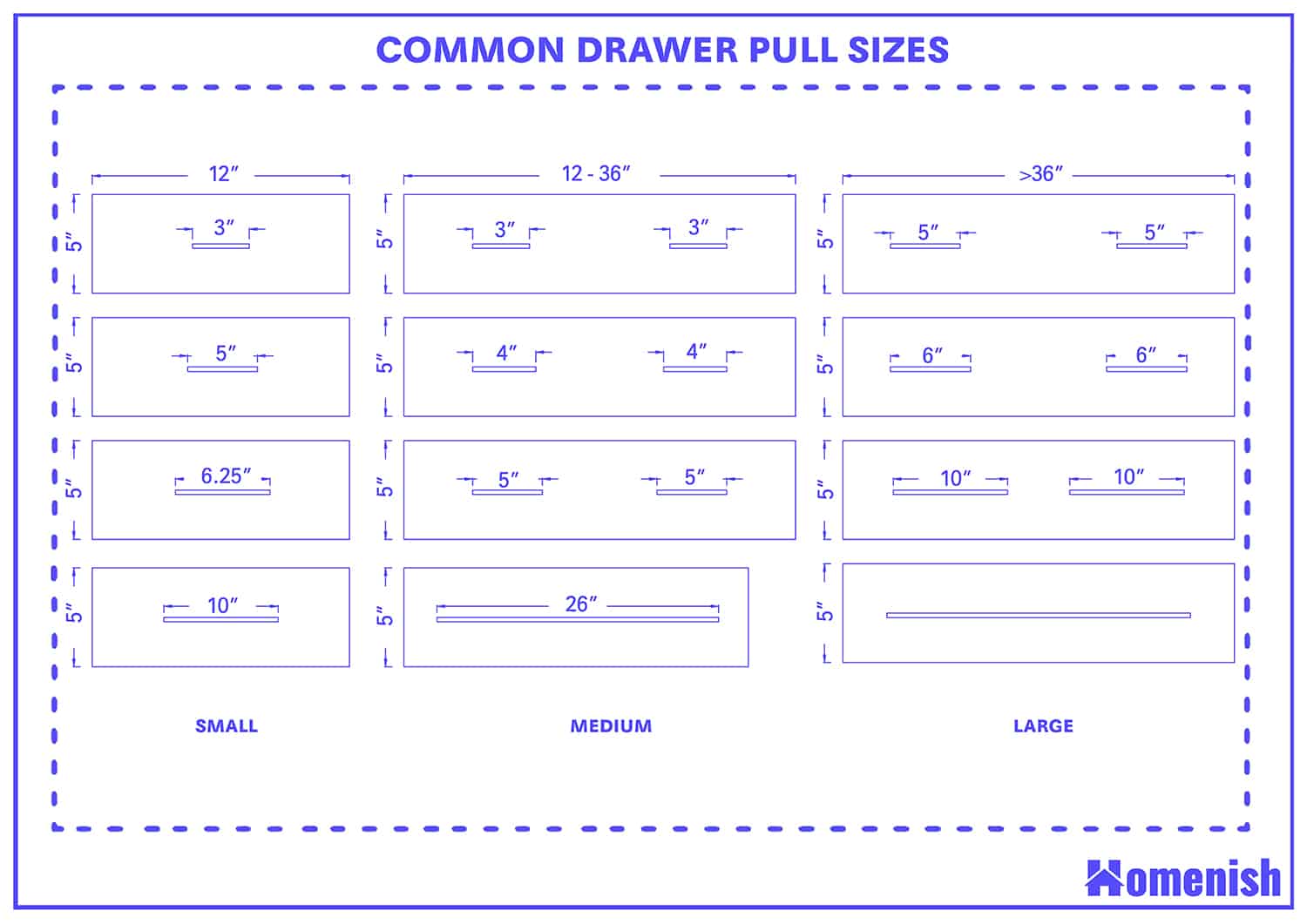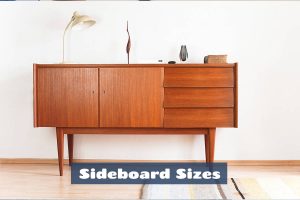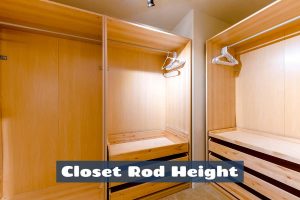Choosing new drawer pulls can be a tricky task because you need to create a good balance between functionality and aesthetic appeal.
Whether you are selecting drawer pulls for newly installed kitchen drawers or updating an older dresser by swapping out the old drawer pulls for new ones, this guide will help you to decide which size of drawer pull to opt for.
Hardware pulls, whether they are for drawers or cabinets, can be measured in various ways, which we look at in greater detail here.
Common Dimensions of Drawers with Pulls
There is no standard drawer pull size because the size of pull will vary depending on the style you want to achieve, as well as the size of your drawers.
Typically, you can expect that larger drawers will need longer drawer pulls, and smaller drawers will need shorter drawer pulls. While the size of drawer pull you choose purely comes down to personal preference, you can use the guide below to help steer you in the right direction of drawer pull based on the size of your drawers.
If you have multiple sizes of drawers, then try to keep the size of your drawer pulls consistent to achieve a look that feels cohesive.
For example, use single 5 inch pulls on your smaller drawers and double 5 inch pulls on your larger drawers to improve functionality and balance while maintaining a harmonious style.
Small size drawers
A small-sized drawer will have dimensions of around 12 inches in width and 5 inches in height. This type of drawer is commonly found in vanity units, laundry rooms, and small kitchens. You can also find small-size drawers in closets and chests of drawers, where people commonly store toiletries, make-up, or underwear.
Office drawers can also come in this size to accommodate paper, notebooks, and stationary. For this size of drawer, a pull or handle will typically have an overall length measurement of 3 inches, 5 inches, 6 ¼ inches, or 10 inches. For drawers that have a width measurement of fewer than 12 inches, a drawer knob will usually be more appropriate to give a balanced look.
Medium size drawers
Medium-sized drawers are those which measure anything over 12 inches in width, right up to 36 inches. For these drawers, you have a lot more options when it comes to choosing the size of drawer pulls. For a classic look, use two drawer pulls on one drawer, one on either side. These pulls should have an overall length of 3 inches each, 4 inches each, or 5 inches each.
For drawers at the larger end of this size range, if you want to stick with a single drawer pull, then you should ensure the overall length of the pull is at least equal to one-third of the total width of the drawer. For example, on a drawer that is 30 inches wide, the drawer pull should be at least 10 inches in overall length.
For a contemporary look, you can go even bigger and opt for a pull that covers almost the entire width of the drawer, for example, a 26-inch pull on a 30-inch drawer.
Large size drawers
Any drawer which has a width measurement of over 36 inches is considered to be large or oversized. These are the types of drawers you might have in the kitchen for storing pots and pans or on a large chest of drawers for keeping bed linen and sheets or folded clothing.
For this size of drawer, you can opt for a classic two-pull look, with pulls that measure 5 inches, 6 inches, or 10 inches each. Or, for a modern style, choose a single pull in a longer length.
If in doubt, always opt for the larger size handle because this will result in a heavier, more expensive look compared to a handle that is too small and looks sad and pathetic.
The position of the drawer pull will also affect the style and functionality and is something you will want to consider when buying the pulls because it may alter the size you choose. Fixing drawer pulls at the top of the drawer is a more practical choice, while installing them in the middle of the drawer gives a modern look.
Drawer Pull Projection
The projection of a drawer pull is the measurement that tells you how far the pull will project out from the surface of the drawer once it has been installed.
The projection of the pull is important because you will want it to be deep enough so that you can fit your fingers behind it for good grip when opening and closing the drawer, but not so deep that it protrudes out into your space and gets in the way or creates an odd look.
Center-to-center
This measurement is the distance measured between each screw that is used to install the drawer pull. Drawer pulls will be attached to the draw via two screws, one at either end, and in some cases, the pull itself can extend a significant amount beyond this point, while in other cases, the total length of the drawer pull will not be much greater than the center-to-center size.
The center-to-center measurement is accepted across the industry as a standardized measurement to enable easy installation of drawer pulls and to help people understand exactly where the pull will be positioned.
The measurement will be taken from the center of one screw hole to the center of the other screw hole, hence the name ‘center-to-center.’
Overall length
This measurement is the total length of a drawer pull from one end to the other. It will always be bigger than the center-to-center measurement.
Diameter
If your drawer pull takes the form of a knob, then it will have a diameter measurement instead of a length measurement, which goes from one side to the other and goes through the center of the pull. A drawer knob will usually be fixed with one screw and therefore won’t have a center-to-center measurement.







